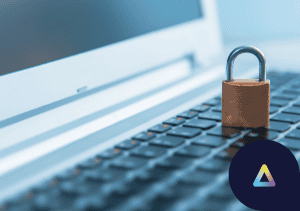Agent attrition: Inevitable? Maybe not.
Are you still hiring 1000 agents for every 500 seats you need to fill?
Ok, it might not be quite that stark (or it might even be worse), but we’re willing to bet it’s not far off.
You’re not alone. The latest figures reported to us from HR leaders at contact centers and BPOs around the world suggest that attrition rates remain as high as ever. In particular, the rate of production attrition (or those dreaded day one no-shows) continues to disappoint and frustrate.
It’s wasting resources, both time and money, and it’s draining enthusiasm out of talent acquisition teams.
And that’s without even getting into the nightmare that is shipping and recovering devices!
You already know that The Great Resignation is in motion. Chances are you’ve felt its effects in your own center. In the U.S., 4.4 million people left their jobs in September 2021 alone. Even pre-pandemic, the high rate of agent attrition has been a perennial headache and cost-sink.
WaH/BYOD: a hero’s origin story
When a problem like high attrition has been around for so long it’s easy to assume it will never change. We know of so many HR professionals who resigned themselves to 100% agent turnover year on year. And we’ve spoken with senior leaders at contact centers who simply chalked it down as an unavoidable cost of doing business in an industry where workers are often “just passing through”.
And then, a solution appeared. Bring Your Own Device (or BYOPC) emerged in mid-2020 as a genuine alternative to the standard corporate device. And the switch to Work at Home? You don’t need reminding of what forced that…
Before 2020, BYOD was a pipedream for many contact centers. In principle, very interesting, but practical? Decision makers weren’t sure.
So what changed? The near overnight requirement to scale up agent headcount in March 2020 for financial service, eCommerce and government contact centers coupled with a sudden, sharp shortage of hardware and long shipping delays (both still very much ongoing).
The pipedream became an operational necessity.
The unexpected power of WaH/BYOD: A mini case study
A senior Director of Talent Acquisition at one of the large BPOs we work with noted “we were seeing anywhere from 30-40% drop off of hires during the period from recruitment to production”.
Most contact centers have a problem around that percentage level in the first 90 days. It’s a common theme: agent is hired, agent get tired of waiting to start working, agent takes another position at a contact center that can onboard and start paying them sooner.
But what this BPO discovered is that one of the unexpected benefits of WaH/BYOD is a dramatic reduction in attrition rates. In fact, this Director of Talent Acquisition observed that the rate dropped to as low as 6% when they allowed the agent to securely use their own device, from their own home. It meant that the agents could be onboarded and start taking calls within days of getting the job.
And secondly, the WAH/BYOD model allows for high-calibre candidates, perhaps living outside competitive urban zones, for whom the compensation model is attractive.
And for whom a career in customer support is not just a temporary gig en-route to something else.
As that Director of Talent Acquisition shared with us, “our ability to meet head count requirements has increased to 90-95%, before BYOD/Wah it was averaging 50%”.
In other words, to echo our figure from earlier, they’re now only hiring 550 or so for every 500 agents needed. That’s incredibly powerful. It’s a game-changer.
Ok, so let’s put some more metrics around BYOD.
WaH/BYOD: The metrics that matter to HR
- Reduction in Pre-production Dropout:
BYOD agents 40% more likely to show up on day 1. - Reduction in Cost-to-Hire:
When you factor in both devices and shipping/recovery, as well the time taken to recruit, the savings are approximately $1000 per hire. - Faster Onboarding:
We’ve seen, first-hand, HR professionals hire and deploy 4000 BYOD agents in under 4 weeks.
Let’s say you were interested in WaH/BYOD. What would the hiring process actually look like? How can you be sure that the agent has a suitable device, for example?
WaH/BYOD: Hiring Process Map
- Phase 1: Assess Candidate and Device Suitability
Insert a link to the online validation tool into the candidate application form. Validate thousands of remote candidate devices within minutes instead of hours. - Phase 2: Virtual Launch Party & Install SRW
New hires are invited to Virtual Launch Parties , where onboarding documents are sent and PCI, GDPR, HIPPA security software is installed remotely. - Phase 3: Pre-Day 1 Training
Training portal login provided to agents, who can instantly access training materials and progress at their own speed.
Recommended reading: A tool to validate and onboard remote agents within minutes
Our advice to HR leaders
Adopting a WaH/BYOD model is no longer a risk or an unknown. And its benefits are transformational. The transition from on-site, corporate devices has been very clearly marked and can be seamless.
If you are interested in exploring how BYOD can benefit your organisation or are wondering how to pitch the idea to other departments like IT or operations, then please get in touch with us.
We’re more than happy to discuss all of this in more detail with you, without any pressure to work with us.



